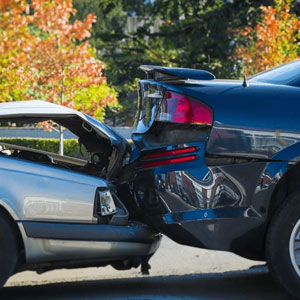
When you’re in a car accident, file an immediate report. Even if you’re not injured on the scene, physical side effects could appear later on. Your vehicle could also suffer “hidden” damages that show up days or weeks after the crash.
Once the police arrive on the scene, provide enough detail to build a sufficient case, if and when you decide to take legal action.
Here are five things every car accident report should include:
1. Witness Accounts
Always collect the name and phone number of witnesses on the scene. If possible, use your cell phone to record their account of what happened. Even if you don’t think they saw anything important, collect their information. You have no idea what will be useful in a future legal action.
For states that use comparative negligence (46 total), you can still seek damages, even if you are partially to blame, as long as you have less than 50% responsibility for the crash.
2. Thorough Incident Description
Was the other driver driving too close to the curb when he turned the corner? Was he wearing a seatbelt? Was his passenger? Even if you think these details have nothing to do with the incident, write them down.
But do not speculate or guess. If you do not know something, say it. If you are unsure whether you are injured, say “I am not sure.” NEVER say “No.” If you find out you are injured, report it to the police immediately.
Other crucial, but often overlooked, accident details include:
3. Photos of the Scene
ANY damage to either your car or your body should be recorded immediately. Use a cell phone to take quick snapshots of the visible damage, without interfering with the police investigation.
If any bruising or scarring appears later, take pictures immediately. Then, contact your police department to add it to your report.
Here a few commonly overlooked details you should include in your photos:
Basically, any information that would help create a full picture of the scene should also be captured on film. Also, try to take photos at different angles and distances – a few up close and others 10 – 20 feet away should suffice.
4. Driver Details
Whether the police assign fault at the scene or not, the insurance companies involved have the freedom to make any decision they want. So do local judges if the case goes to court.
Collecting information on the driver will make your life easier if the police don’t rule in your favor.
Here are some driver details to collect:
The more information you collect, the easier the case will be to close.
5. Police Officer Details
If the police arrive on the scene, ask for their business card right away. If they don’t have one, write down their name and contact information (or save it in your phone).
Don’t wait until you get the accident report in the mail. Often, the name of the officer is difficult or impossible to read. Other times, the wrong name or the name of a supervising officer will appear. Be proactive, and collect the officer’s information at the scene. That way, you can go directly to the source if any conflicts arise.
But what if the police don’t show up to file a report? Or, even worse, what if the police take the side of the other driver and write a biased report?
The power is still in your hands.
The best defense is having an experienced personal injury attorney by your side.
Just tell Robert! Whether you’re seeking damages for your vehicle or bodily injury, the law is there to help you recover your financial loss and compensate you for pain and suffering.
We’re here for you, and we will evaluate your options free of charge and advise you of the necessary steps to get the compensation you deserve. Our phones are answered 24 hours a day, 7 days a week.
Contact us toll-free at 1-800-TellRobert.
News Sources:

The Lawyers at Fenstersheib Law Group, P.A. provide
personalized legal representation for personal injury cases.
FREE CONSULTATION 1-800-TELLROBERT • (954) 456-2488